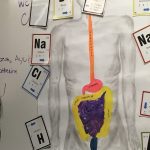How is plastic recycled?
THE DYSFUNCTION OF PLASTICS RECYCLING
Plastics recycling, as it exists today, is a mess. In 2015, the US recycled only 9.1% of the 31 million t of plastics that consumers threw out, according to the Environmental Protection Agency. The vast majority ended up in either landfills or incinerators. In contrast, two-thirds of paper, a third of metals, and a quarter of glass were recycled that year. In the European Union, about 14.8% of the roughly 27 million t of plastic waste was recycled in 2016, according to the European Commission.
Plastics recycling is a battle against entropy. Consumers throw plastics of all sorts into curbside bins, where they get mixed with metal and glass. From this assorted waste, recycling facilities use optical sorters to pluck out only the most valuable plastics for reuse.
Recycling facilities are most interested in PET beverage bottles and high-density polyethylene containers like milk jugs—plastics numbers 1 and 2, respectively. They are relatively clean and homogeneous materials, and recyclers handle enough of them to make extraction worthwhile. Secondary processors wash, melt, and repelletize them for reuse.
Some of the other residual plastics—polypropylene yogurt cups and multilayer plastic pouches, for example—are baled and carted off to processors that attempt to extract additional plastics of some value. But most go to landfills.
Even desirable number 1s and 2s that are sorted out of curbside streams are difficult to recycle. They are contaminated with food and grime. Not all plastics with the same name and number are actually the same: the PET used in a takeout container is different from that used in a water bottle.
For all these reasons, plastics are usually downcycled into applications with less-exacting specifications than what the virgin materials were designed for. A soda bottle doesn’t become a soda bottle again; it is made into a carpet or a fleece vest. In its next incarnation, the milk jug becomes the inner layer of a detergent bottle.



